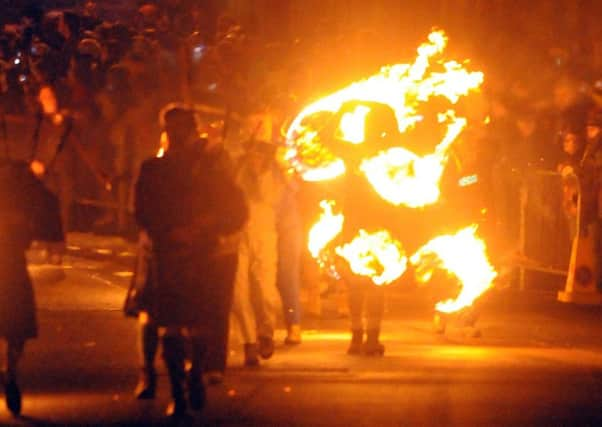Four things you should know this morning


Scotland’s Hogmanay: origins and traditions
While much of the world celebrates the beginning of the New Year, few are as passionate about it than the Scots.
Despite many theories as to its origins, no-one knows for sure where the word “Hogmanay” originated from. What is known is that Hogmanay is the Scots word for the final day of the year, and today it is most frequently used to refer to the evening’s celebrations. Theories have placed “Hogmanay” as a product of Gaelic or Norman-French origin, with the similarities to “Homme est né” (“Man is born”) in French also being noted.
Advertisement
Hide AdAdvertisement
Hide AdScotland’s raucous new year celebration is the descendant of a Viking festival which acknowledged the winter solstice. In addition to this, Christmas in Scotland was a very muted affair for over 300 years, as it was seen as a Catholic festival by Scottish Protestant kirks and duly banned after the Reformation.
Six gadgets to look forward to in 2016
2016 is looking to be the year of the smartwatch. Despite the fact that smartwatches were around in 2015 , in the new year they’re set to become even more popular. The technology to develop the gadgets has become a lot more widespread meaning manufacturers have been able to refine and tweak their tech.
While early watches weren’t the best looking of accessories, designs for 2016 will be sleeker and trendier with a huge choice of designs, straps and customisations.
BENDY PHONES
Samsung has confirmed it’s working on a folding phone and if the leaks are correct, that could arrive as early as January 2016. The gadget will use flexible OLED technology meaning that the phone’s display can bend as opposed to being pre-bent like the previous Samsung Galaxy S6 Edge. The development will produce phones that look like nothing like anything we’ve seen. LG are also developing the bendy screens and even debuted a television so thin it can be attached to a wall using no more than magnets.
Royal Edinburgh Military Tattoo set for overseas tour
Organisers of the Royal Edinburgh Military Tattoo are preparing to take the event on tour every two years to help raise its global profile and bring new international acts back to Edinburgh.
The world-famous event is being lined up for extensive visits to both the Persian Gulf and China for the first time within the next five years.
The overseas trips, currently pencilled in for 2018 and 2020 respectively, will follow on from forthcoming visits to both New Zealand and Australia.
The Tattoo’s chief executive and Edinburgh’s Lord Provost have already held preliminary talks with senior overseas government officials over the proposed overseas visits.
Advertisement
Hide AdAdvertisement
Hide AdIt is hoped they will help will help raise awareness of the Tattoo in some of Scotland’s key foreign markets as well as boost cultural, heritage and trade links between Edinburgh and the cities where the event is staged.
More than 14 million people have attended the Tattoo since it was first held at Edinburgh Castle esplanade and all 217,000 tickets for the event have been sold out for the last 17 years in a row.
Hundreds of Scots still watching TV in black and white
More than 550 people in Scotland are still watching television in black and white.
Glasgow hosts the largest number of black and white sets at 200, followed by Edinburgh with 55.
Britain became the first country in Europe to offer regular programming in colour back in 1967, yet almost 10,000 black and white licences are still in force across the UK.
TV Licensing Scotland revealed the figure as it reminded viewers that they need a licence, however dated the model.
Regular colour broadcasts began on BBC2 in July 1967 with the Wimbledon tennis tournament – three weeks ahead of West Germany. The number of black and white licences issued each year has been in steady decline since.
The cost is £49 compared to £145.50 for a colour licence.